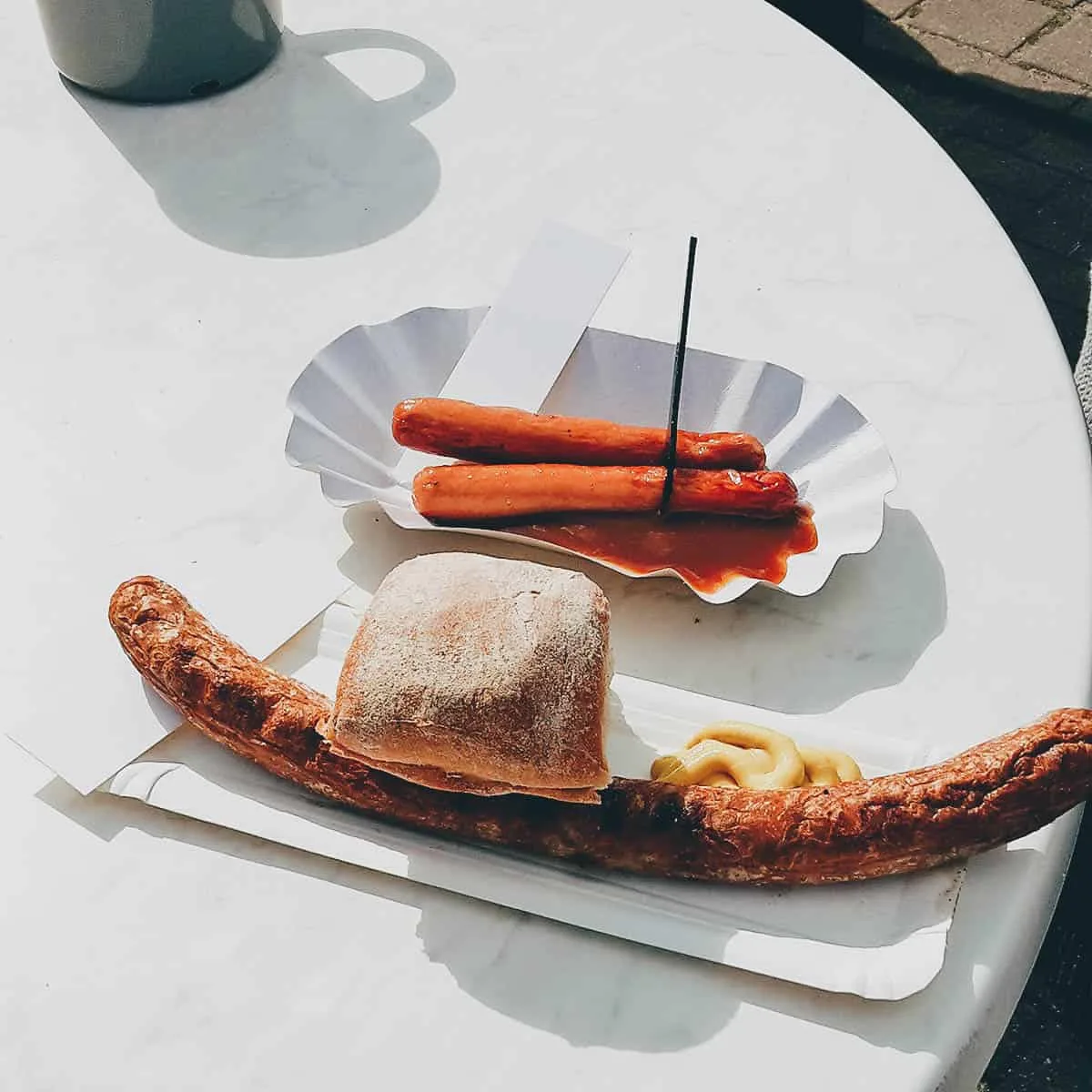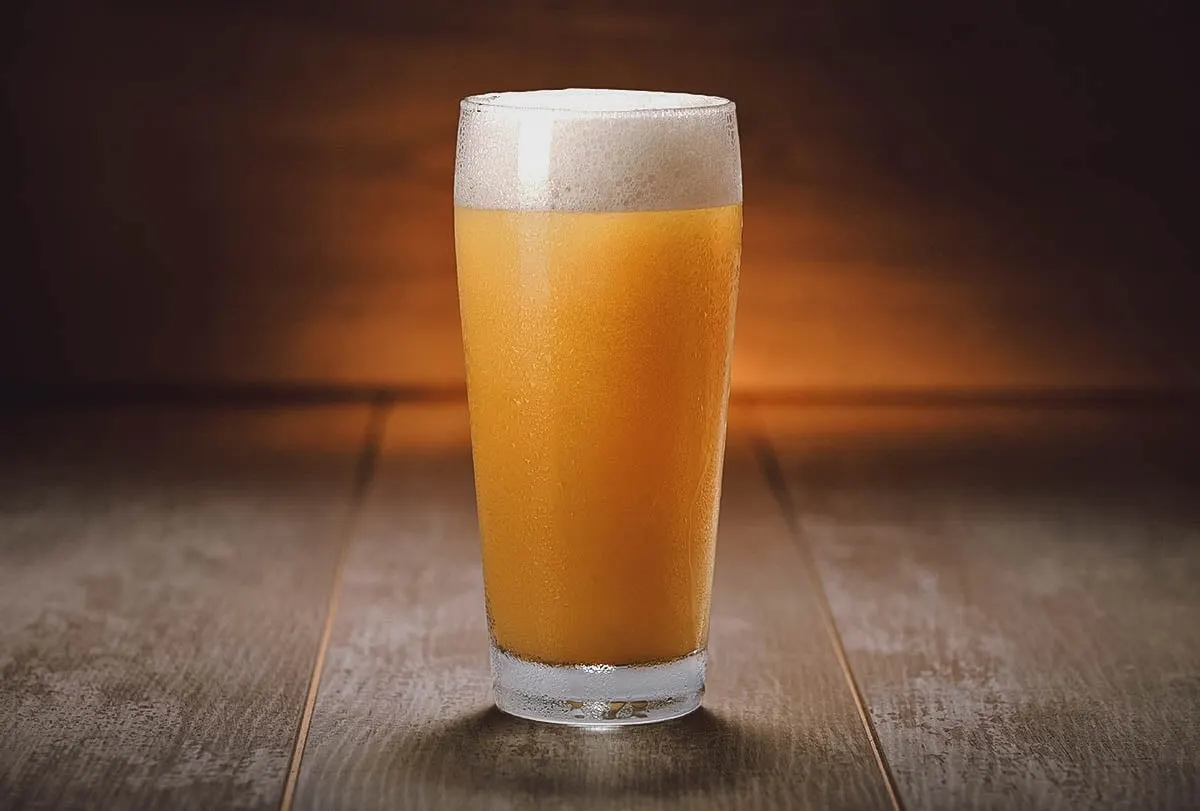Here we will look at some of the most infamous German foods and drinks that you should try when you visit Germany.
- Schnitzel
- A Schnitzel is made by tenderizing a piece of meat (such as chicken, beef, veal, or pork) and then covering it in egg, flour, and breadcrumbs before frying it in oil. Very similar to a French escalope, the Schnitzel actually originated in Austria.
- This dish is a good example of the typical German food served in bars, restaurants, and fast food eateries. Schnitzel plus fries is a very popular and satisfying choice.

- Brezel or Pretzel
- Brezel is the German term for ‘pretzel’, although you may see them sold under either name. Available at bakeries and on street stalls, a Brezel is made with a long strip of dough which is folded into a knot and then boiled before being baked. This results in a chewy brown crust and a soft fluffy interior.
- It is typically then flavored with salt, seeds, or cheese and served with a mustard dip. The origin of the Brezel is fiercely contested, but they have long been associated with Christian celebrations, with many viewing the knot shape as a symbol of the holy trinity.

- Bratwurst
- Bratwurst refers to a type of German sausage most often made with pork, though it can also be made with veal or beef. Like most German foods, it can also come in several regional varieties. Bratwurst of all kinds is extremely popular in Germany and is often served as a snack with a white bread roll and mustard. In German pubs and traditional German restaurants, bratwurst is served with a side of sauerkraut or potato salad and a slice of dark rye bread or pretzels. Bratwurst is also a key ingredient in a proper German grillen (barbecue).

- Bratwurst refers to a type of German sausage most often made with pork, though it can also be made with veal or beef. Like most German foods, it can also come in several regional varieties. Bratwurst of all kinds is extremely popular in Germany and is often served as a snack with a white bread roll and mustard. In German pubs and traditional German restaurants, bratwurst is served with a side of sauerkraut or potato salad and a slice of dark rye bread or pretzels. Bratwurst is also a key ingredient in a proper German grillen (barbecue).
- Apfelstrudel
- Originally from Austria, apfelstrudel consists of baked rolled dough filled with apples. The dough is commonly made with filo pastry but it can also be made with puff pastry, yeast dough, or quark dough.
- Normally, the filo pastry for apfelsrudel is made at home. It’s filled with apples (cubed, sliced, or grated), dark raisins, and breadcrumbs and sprinkled with cinnamon and granulated sugar. It’s then rolled into a log like shape and slathered with butter before being baked in an oven.
- German apfelstrudel is often dusted with icing sugar and can be served cold or warm with vanilla sauce, vanilla ice cream, or whipped cream.
- Apfelstrudel is a beloved dessert and its variants can be found almost anywhere in Germany. It’s commonly made at home as well, especially in autumn when apples are in season.

- Hefeweizen
- Hefeweizen refers to a popular type of German beer made with a high proportion of wheat malt. These beers are also referrd to as weizenbier or weißbier.
- The most widely available version of hefeweizen is the Bavarian weizenbier. However, these German wheat beers don’t really differ much by region, only by brewery. Each brewer uses their own recipe but the beer must contain at least 50% wheat malt to be considered a wheat beer. Hefeweizen is usually unfiltered and cloudy, and light in color.
- The proliferation of hefeweizen typically denotes that summer has started in Germany. Typically, any German pub, bar, or restaurant will have a decent selection of beer on tap so finding and tasting hefeweizen should be easy.

- Riesling
- Riesling refers to a German white grape variety. One of the most important grape varieties in Germany, it originated in the Rhine region but it can now be found throughout the world.
- Today, Riesling is one of the most widespread German wines. German Riesling is lively and fresh, often with recognizable fruity notes.
- If you’re visiting any of the wine-growing regions of Germany such as the Moselle Valley, Rheingau, or Franconia, then sampling the local wines is a must.

